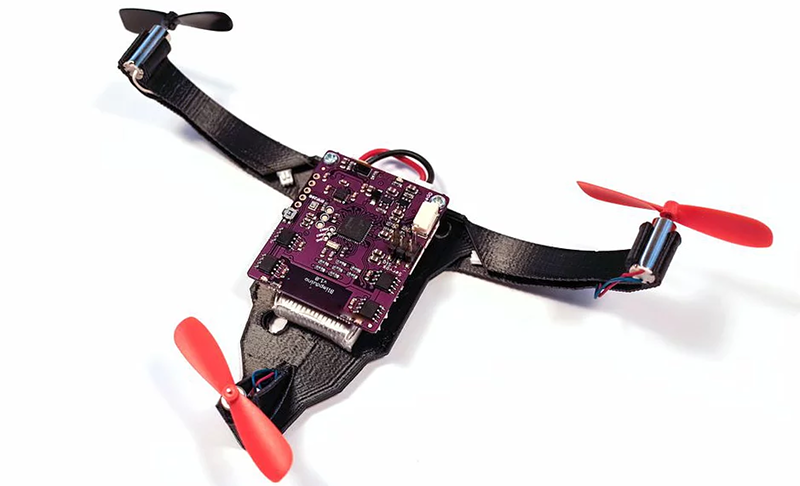We always think that crossing the Atlantic in a blimp would be very serene — at least once they put heaters on board. The Hindenburg, the R-101, and the Shenandoah put an end to the age of the airship, at least for commercial passenger travel. But you can still fly your own with a helium balloon and some electronics. One notable project — the Blimpduino — has evolved into the Blimpduino 2. The open-source software is on GitHub. We couldn’t find the PCB layout, so we aren’t sure if it is or will be open. The 3D printed parts are available, though.
The PCB is the heart of the matter, a four-layer board with an ARM M0 processor, an ESP8266 WiFi module, four motor outputs, two servo motor outputs, a 9-axis inertial navigation system, an altimeter, and a forward object detection system. There’s also a battery charger onboard.
The standard set up uses three props: two for thrust and one for altitude. There’s a smartphone app and apparently, you can even have a copilot with a second phone. The lifting body is a mylar balloon with helium and they say the control is suitable even for a very large balloon. The altimeter data is from a time-of-flight sensor and there’s also a pressure transducer with temperature sensor if you want to measure higher altitudes.
We couldn’t embed the video, but there’s one of people flying the things through hoops on the website. You can, however, see a promotional video, below. As you might expect, payload capability is very low and so 3D printed parts have low infill and the board is made to be light.
Of course, our own [Sophi Kravitz] has been building her drone blimp army for some time and we are waiting for her attempt at world domination any day now. If you are in the mood for something lower tech, you can always rip apart a toy car and add your own balloon.
















Second paragraph, first sentece; replace “.. four motor outputs, two motor outputs ..” with “.. four motor outputs, two servo outputs ..”
My cat really likes your second paragraph as well.
That’s what I get for fixing the other one on my phone.
this needs a cheep camera on it, im sure the esp8266 could do the heavy lifting to serve that up real time
better go with esp32, just to be sure.
You can attach this one (quite lightweight including the transmitter. Less than 5 grams) https://www.gearbest.com/camera/pp_615696.html?wid=1433363
Flight time until the batteries are empty?
40 minutes with the 500 mAh battery and conservative piloting
Taking a wild guess based on the solder mask, I see the gerbs at OSH Park: https://oshpark.com/shared_projects/rWdk2RKp
Oops – not gerbs, but an Eagle .brd file.
That PCB is missing the Lidar and MPU :-\
Just finished mine- great fun! Living in Denver I needed a 36″ balloon, it can lift aan extra 10 grams or so. I would love to find a cigar shaped balloon with the same lift. It still flies after a week.
years ago I made a RC large blimp. flew in Orlando which is basically sea level then took it to colorado which was about a mile high. It had a lot less lifting power.
Use hydrogen. Cheaper, more lift, doesn’t leak, don’t need special balloon material, not a limited resource.
Actually, much, much, much, MUCH cheaper, and you can make it yourself. I once considered making a good size (don’t remember the overall length) RC dirigible, then discovered it would cost over $200 to fill. And because it was big, it would either have to be pumped out into a cylinder (in the field, mind you), or just released into the air after flight. My partner refused to consider hydrogen, so that was the end of the project.
Thanks for the feedback! Getting mine now
Hey John, are you still in Denver? I’m looking to get my hands on a board for a project I am working on, but they are unfortunately sold out. I’d love to purchase yours if you are willing to part with it!